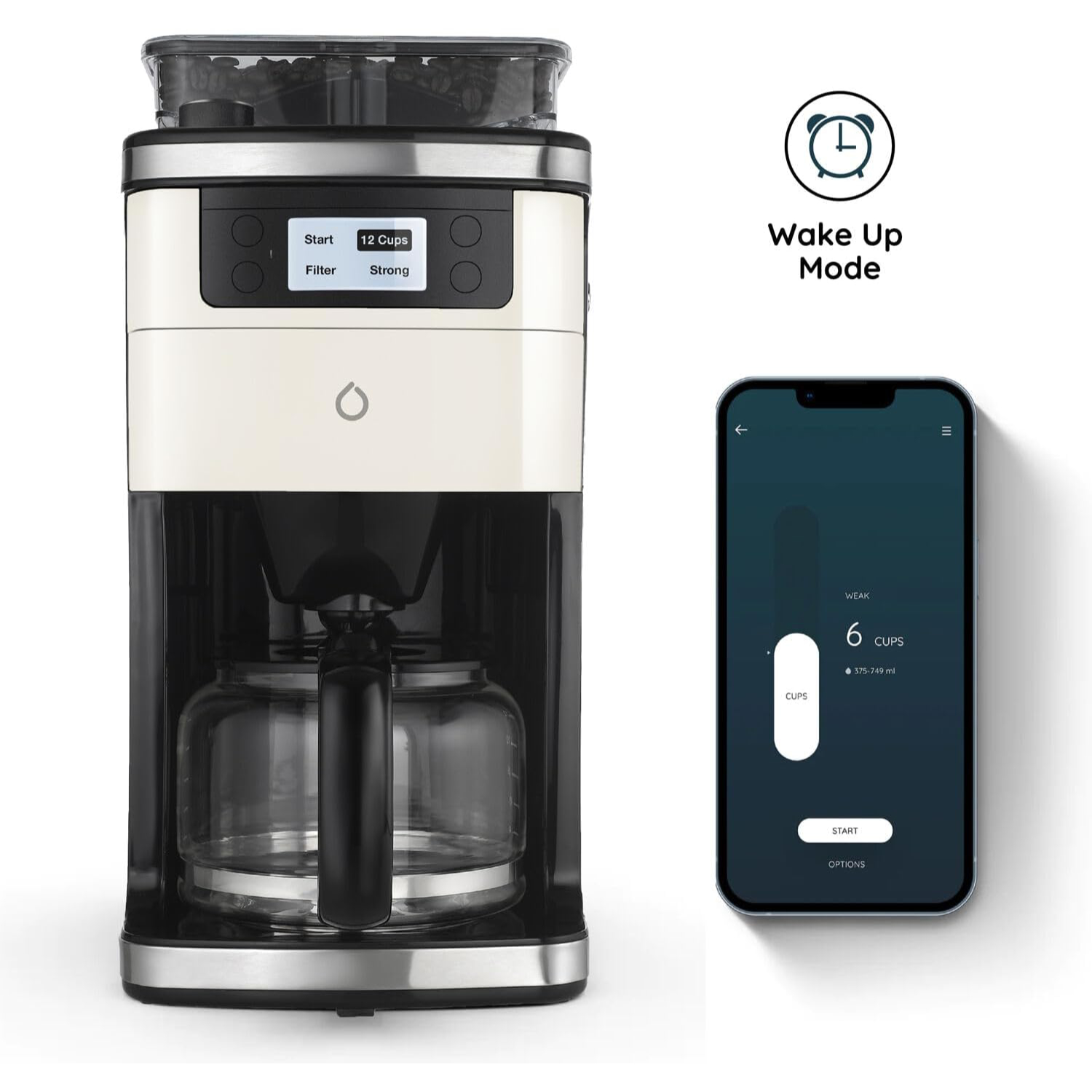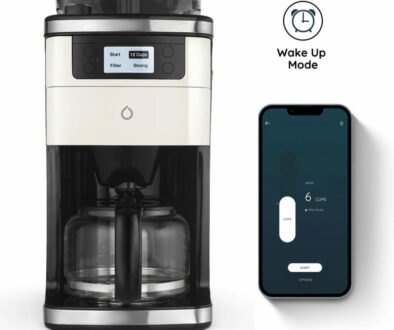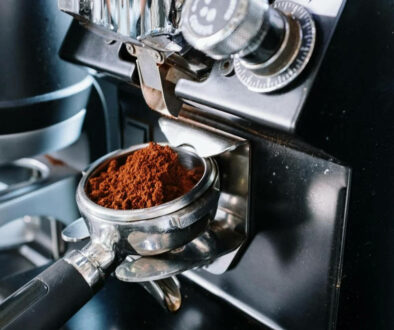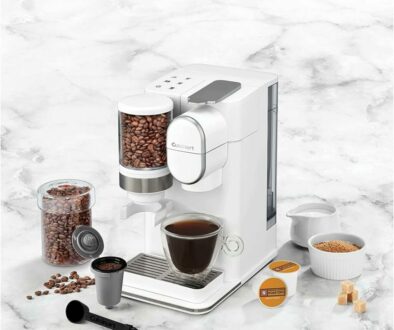How Water Quality Affects Coffee Brewing: Minerals, pH, TDS and Extraction
In coffee brewing, we tend to focus on beans, grind size, or brewing method, yet one crucial element often goes unnoticed: water. Since coffee is about 98% water, its quality profoundly affects the flavour, aroma, and texture of the final cup. Key water characteristics—mineral content, pH, and TDS—significantly impact the coffee’s taste profile.
A balanced mineral composition can highlight the coffee’s natural sweetness and acidity, while the wrong pH level can leave it overly bitter or flat. Understanding these factors and adjusting them can transform a cup from ordinary to extraordinary.
Why Water Quality Matters in Coffee Brewing
Water does more than act as a medium in brewing; it actively participates in extraction. Acting as a solvent, water interacts with coffee’s complex compounds—aromatic oils, acids, sugars, and proteins—determining which dissolve readily.
This process affects every element of your coffee’s taste, mouthfeel, and aroma. Minerals like calcium and magnesium help draw out bright flavours, while excessive bicarbonates can mute them, leaving a chalky aftertaste. Too much acidity can lead to under-extraction, resulting in a thin, sour coffee, while overly alkaline water can cause over-extraction, creating harsh bitterness.
Professional baristas and specialty coffee shops often meticulously control water quality, using high-quality filters or adding minerals to purified water to ensure the best composition for flavour extraction. By understanding how water impacts flavour, you, too, can elevate your brewing skills and unlock the full potential of your coffee.
Key Factors in Water Quality for Coffee
1. Mineral Content
Calcium and Magnesium: The primary contributors to water hardness, these minerals impact flavour extraction. Calcium lends a smooth, rounded body to coffee, while magnesium enhances brightness and clarity.
Bicarbonates: Acting as a buffer, bicarbonates control water’s acidity. In moderate amounts, they smooth out flavours, but too much can dull acidity and sweetness, leaving a chalky taste.
Sodium and Potassium: Present in smaller amounts, these minerals influence sweetness and mouthfeel, enriching the coffee’s flavour without overpowering it.
2. pH Level
The pH scale measures water’s acidity or alkalinity, with 7 as neutral. Ideally, coffee brewing water should be slightly acidic to neutral (6.5-7.5). Too much acidity can result in a sour, thin coffee, while too much alkalinity can cause a flat, bitter taste. Balanced pH ensures full extraction, bringing out the coffee’s nuanced flavours.
3. Total Dissolved Solids (TDS)
TDS represents the total amount of dissolved minerals and impurities in water, usually measured in parts per million (ppm). The ideal TDS range for coffee is generally 150-250 ppm, supporting consistent extraction and a balanced flavour profile. Maintaining the right TDS ensures a full-bodied cup with clarity in flavour.
4. Water Hardness and Alkalinity
Hardness: Higher levels of calcium and magnesium, or “hard water,” influence extraction and produce a rounded flavour. However, very hard water can leave mineral deposits on equipment, affecting longevity.
Alkalinity: Higher alkalinity helps neutralize acidity, reducing perceived sharpness and creating a smoother mouthfeel. Excessive alkalinity, though, may flatten the coffee’s taste.
Considering these factors lets you tailor your water to achieve the best extraction and flavour profile, helping unlock complex notes that reflect the quality of both your beans and brewing method. Let’s look at each of these factors in turn, their role in coffee flavour and how to test and balance these.

Minerals and Their Role in Coffee Flavour
Minerals don’t just determine water hardness; they directly interact with coffee compounds to shape flavour. Here’s how calcium, magnesium, sodium, and bicarbonates contribute to your coffee’s unique taste:
1. Calcium and Magnesium
Calcium: A major contributor to water hardness, calcium supports balanced extraction, enriching body and mouthfeel. Excessive calcium may slow extraction, leading to a heavy-bodied cup.
Magnesium: Known as a “flavour-enhancing” mineral, magnesium brings out bright, lively notes, adding clarity and complexity to the cup. Many specialty brewers prefer magnesium-rich water for its aromatic qualities.
Balancing Calcium and Magnesium: A mix of both minerals achieves a smooth body with vibrant flavours. The Specialty Coffee Association (SCA) recommends specific ranges to achieve this balance in coffee.
2. Sodium and Potassium
Sodium: Small sodium amounts enhance coffee’s sweetness. Naturally low in most drinking water, a slight adjustment can round out flavours without overpowering them.
Potassium: Known for enriching mouthfeel, potassium provides a smooth, lingering finish. Small additions enhance sweetness without bitterness.
3. Bicarbonates
Bicarbonates act as a buffering agent, moderating acidity in coffee. In moderation, bicarbonates smooth out acidic notes, creating a rounded flavour. However, high levels can impart a chalky taste and obscure fruity or bright acidic qualities.
4. Recommended Mineral Levels for Optimal Coffee Flavour
The SCA suggests the following for balanced coffee flavour:
- Calcium and Magnesium: 50-175 ppm.
- Bicarbonates: Alkalinity of 40-75 ppm.
- Sodium: Under 10 ppm to maintain sweetness.
Use a water filter designed for coffee or try mineral packets like Third Wave Water to achieve this balance. Avoid highly mineralized bottled water, which can distort flavour and harm equipment.
pH Level: Balancing Acidity in Coffee
Water’s pH level is pivotal to flavour extraction, influencing acidity and body. Ideally, the pH for coffee should be between 6.5 and 7.5. Balanced pH ensures that water extracts coffee compounds fully and harmoniously, avoiding sourness from excessive acidity or dullness from excessive alkalinity.
1. Testing and Adjusting pH for Coffee
Use pH test strips or a digital meter for accuracy.
- If Too Acidic: Add a small pinch of baking soda or use a filter to neutralize acidity.
- If Too Alkaline: Distilled or filtered water can reduce alkalinity, as can adding an acidic mineral blend.
Experiment with minor adjustments to find the pH that best suits your coffee preference, revealing the beans’ full character.
2. Consistent Practices for pH
Using filtered or purified water stabilises both pH and mineral balance. If using tap water, monitor pH periodically, as municipal treatments can fluctuate. Specialty water blends can simplify brewing with consistently balanced minerals.

Search Digital pH Meter on Amazon
Total Dissolved Solids (TDS) and Coffee Extraction
TDS levels play a crucial role in ensuring a balanced extraction, impacting flavour intensity and mouthfeel. The ideal range for coffee TDS is 150-250 ppm, balancing extraction without overpowering delicate flavours.
1. Understanding TDS in Coffee Brewing
Water with appropriate TDS extracts flavour more effectively. Low TDS water may lead to under-extraction, creating weak, sour coffee, while excessively high TDS water can cause over-extraction, yielding a bitter or heavy cup.
2. Ideal TDS Levels for Coffee
Maintaining TDS levels within the 150-250 ppm range allows for consistency and control in brewing, giving you a dependable starting point for flavour tuning.
3. Testing and Adjusting TDS
- If Too Low: Mineral packets like Third Wave Water can increase TDS, especially helpful for distilled or reverse-osmosis (RO) water.
- If Too High: An RO filter or diluting with distilled water can bring TDS to a balanced level.
Use a TDS meter to fine-tune water adjustments, enabling you to achieve a well-rounded cup that reflects your beans’ unique flavour profile.

Search TDS Water Tester on Amazon
Water Hardness vs. Alkalinity
Water hardness and alkalinity, though related to mineral content, serve distinct roles in extraction and flavour.
1. Water Hardness: Enhancing Flavour and Body
Hardness measures calcium and magnesium levels, which contribute to water’s ability to dissolve coffee compounds. Moderate hardness (50-150 ppm) creates a balanced cup, adding body and flavour. Excessive hardness can lead to bitterness and equipment buildup, so regular descaling may be necessary.
2. Alkalinity: Balancing Acidity and Smoothness
Alkalinity, mainly influenced by bicarbonates, buffers acidity. Moderate alkalinity (40-75 ppm) balances acidity and smooths mouthfeel, creating a rounded flavour. Excessive alkalinity, however, can mute brightness, causing flat or chalky flavours.
Testing and Adjusting Hardness and Alkalinity
- Testing: Water test kits for hardness and alkalinity are readily available.
- Adjusting Hardness: An RO system or mineral packets can manage hardness levels, while soft water options help reduce it.
- Adjusting Alkalinity: A touch of bicarbonate stabilizes acidity if alkalinity is too low, but adjust sparingly to avoid dulling flavour.
For a balanced coffee experience, aim for moderate levels of hardness and alkalinity, preserving natural sweetness and complexity.

Search Water Hardness Test Kit on Amazon
Testing and Adjusting Your Water for Coffee Brewing
Achieving ideal water quality doesn’t have to be complex, but it does involve some testing and adjustments.
1. Testing Methods
- pH Testing: Use pH test strips or meters to maintain a balanced 6.5-7.5 range.
- TDS Testing: TDS meters help achieve the 150-250 ppm range.
- Hardness and Alkalinity Testing: Test kits provide readings on calcium, magnesium, and bicarbonates, giving insight into your water’s suitability for brewing.
2. Adjusting Key Elements
- Lowering pH: Add a slight amount of citric acid or acidic mineral blend.
- Increasing TDS: Mineral packets raise TDS levels effectively.
- Reducing Hardness: Use RO systems or water softeners if hardness exceeds 150 ppm.
3. Experimentation
Small adjustments can reveal ideal compositions. Keep notes of your results to refine preferences over time.
4. Choosing Your Water Source
- Filtered Tap Water: Affordable and accessible, but monitor its mineral balance.
- Distilled or RO Water + Minerals: Customizable with mineral packets.
- Specialty Bottled Water: Consistent pH and mineral levels, ideal for specialty brews.

Search Reverse Osmosis Water Filter on Amazon
In Closing
Water quality is essential to unlocking the full potential of coffee beans. The balance of minerals, pH, TDS, hardness, and alkalinity all interact with coffee compounds during extraction, influencing taste, mouthfeel, and aroma.
Whether you’re brewing a light, fruity single-origin or a bold blend, focusing on water quality elevates the entire experience. By fine-tuning these elements, you can enjoy the complex layers of flavour unique to each brew, turning a simple cup of coffee into a remarkable one.














